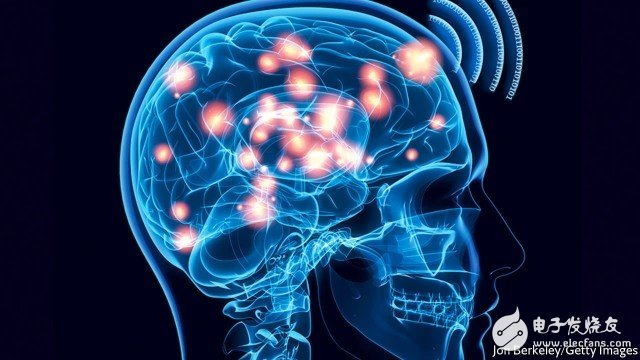The latest issue of the British "Economist" magazine published a cover article, discussing the prospects and challenges of the brain-computer interface, and even thought that this technology may change the definition of "human".
The following is the original content:
When it comes to technology, many people think of change. For William Kochevar, this kind of evaluation is deserved. After a bicycle accident, Kchewo’s shoulders were all squatting, but he was still able to move his arms autonomously. This is partly due to the electrode implanted in his right hand, which he can use to stimulate the muscles.
But the actual effect is even more amazing. Ketchevo can use his mind to control his arms. His motorinal intent is reflected in the neural activity of the motor cortex, which is detected by implants in his brain and then processed into instructions that activate the electrodes in the arm.
This way of decoding thinking sounds a lot like science fiction. But the brain-computer interface of Ketcho's BrainGate does prove that thinking control can indeed be achieved. Researchers can use neural activity alone to judge what people hear and what they see.
Information can also be encoded and then used to stimulate the brain. More than 300,000 people use cochlear implants, which convert sound into electrical signals and send them to the brain, allowing them to hear the converted sound again. Scientists have "injected" data into the monkey's brain, allowing them to make various actions through electrical impulses.

As this issue of The Economist's Technology Quarterly, the speed of research on brain-computer interfaces is accelerating and ambition is also expanding. The US military and Silicon Valley are also beginning to focus on the brain. Facebook dreams of typing text directly through the brain. The startup Kernel also invested $100 million in neurotechnology.
0Elon Musk also founded a company called Neuralink: He believes that if humans want to survive the emergence of artificial intelligence, they must upgrade. Entrepreneurs have envisioned a world in which humans can communicate with each other and machines through telepathy, or hear very high-frequency sounds like Superman.
If these capabilities can be achieved, they will have to wait for decades. But before that, the brain-computer interface can open a door for us to get in touch with new applications. Imagine that we may be able to help the blind to see the light by stimulating the visual cortex, to establish new neural connections for stroke patients, or to monitor the brain to find signs of depression. By converting neuronal discharge into usable resources, the brain-computer interface may change the definition of "human".
Obstacles still exist
Skeptics see this as a laughing stock. For example, it has proven to be very difficult to apply a medical brain-computer interface in the laboratory to the clinic. The BrainGate used by Kechevo was developed 10 years ago, but not many people have actually tried it. It is hard to imagine turning a graft into a consumer product. The road to the mainstream is blocked by three major obstacles – technology, science and business.
The first is technology. Non-invasive techniques such as electroencephalography are difficult to obtain high-definition brain signals by intervening in cortex, bone, and film. Some progress has been made now – with EEG hats, you can run virtual reality games with simple thinking or control industrial robots.
But at least for a while, the most ambitious application model still needs to interact directly with the nerves through the graft. Existing devices have many drawbacks that require some circuitry to achieve, which triggers rejection and can only interact with hundreds of the 85 billion neurons in the human brain.
However, this status quo will soon change. Thanks to advances in miniaturization technology and increased computing power, researchers are developing secure wireless implants that can exchange information with hundreds of thousands of neurons. Some of them can interpret the electrical signals of the brain, while others can sense light, magnetism and ultrasound.
After removing technical barriers, another difficulty must be overcome. The brain is still an unknown world. Scientists know very little about how it works, especially when it comes to complex functions such as memory formation. Research on animals is more comprehensive, but it is difficult to conduct human experiments.
However, humans now have a deeper understanding of brain regions such as the sports cortex. And it is not necessary to fully understand the relevant knowledge. Machine learning can identify patterns of neural activity, and the brain itself can easily figure out how the brain-computer interface is controlled. Neuroscience will uncover more secrets about the brain.
Open a hole in the head
The third obstacle comes from commercialization. In order to get medical equipment approved, it takes time, money and technology, and consumer applications only need to provide useful functions for people to succeed.
Some brain-computer interface applications are not necessary at all - using voice assistants instead of fingers is easier than transplanting components in the brain. It seems unrealistic to provide craniotomy for the average consumer in order to enjoy this service. However, intracerebral transplantation has become a specific treatment option in some cases. About 150,000 people around the world have undergone deep brain stimulation and help them control Parkinson's disease through electrodes. Elective surgery will become a routine procedure like laser eye surgery.
Compact Substation,Isolation Transformer,Compact Prefabricated Substation,Compact Transformer Substation
Hangzhou Qiantang River Electric Group Co., Ltd.(QRE) , https://www.qretransformer.com